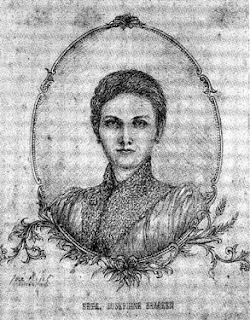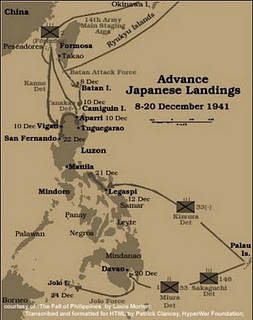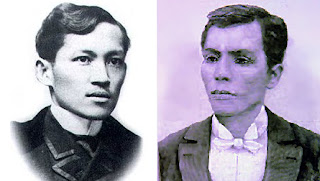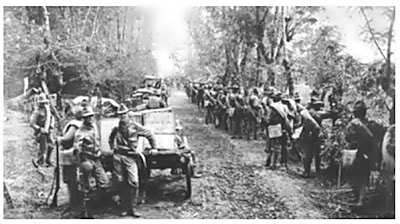 |
| Henry Otley Beyer |
Photo credit: http://books.google.com/books?id=KXmIq_BGr8wC&dq=Henry+Otley+Beyer&source=gbs_navlinks_s
 |
| Henry Otley Beyer |
 |
| Execution of Jose Rizal y Mercado |

 |
| President Ramon del Fierro Magsaysay |
 |
| Torture of Bicol Martyrs |
 |
| Sketch of Leonor Rivera |
 |
| Teodora Alonzo de Rizal with young Leonora Rivera |
 |
 1918 - Felix Manalo y Ysagun, Filipino founder of the Iglesia ni Cristo (INC), is honored as an outstanding evengelist by the ministers of the Christian mission, some four years after founding his own church, the INC; Manalo went through a razzle-dazzle period of soul-searching--joining the Philippine Independent Church, then Colorum, the Methodist Episcopalian Church, and then the Seventh Day Adventist--before eventually finding his spiritual truth in his church; in 1922 during the period wherein he would be accused of immorality (for supposedly raping/molesting 30 or so women members of INC), Manalo would introduce in his church the important Sugo doctrine claiming that he is the messenger of God, the fifth angle of Revelation.
1918 - Felix Manalo y Ysagun, Filipino founder of the Iglesia ni Cristo (INC), is honored as an outstanding evengelist by the ministers of the Christian mission, some four years after founding his own church, the INC; Manalo went through a razzle-dazzle period of soul-searching--joining the Philippine Independent Church, then Colorum, the Methodist Episcopalian Church, and then the Seventh Day Adventist--before eventually finding his spiritual truth in his church; in 1922 during the period wherein he would be accused of immorality (for supposedly raping/molesting 30 or so women members of INC), Manalo would introduce in his church the important Sugo doctrine claiming that he is the messenger of God, the fifth angle of Revelation. |
| Sen. Mamintal Tamano |
 1941 - The Japanese attacks Jolo, Sulu island
in the southern part of the American colony in Southeast Asia, the
Philippines, during the Second World War; the entire province of Sulu,
which is important as staging area for the Japanese invasion of North
Borneo, succumbed to the forces of Asia's giant; owing to the corollary
brutality of the Japanese who will initially execute Chinese residents
of Jolo in retaliation for their support for Chinese resistance
against the Japanese invasion in China, a number of fragmented secret
armed groups will be organized until a Tausug, Abdulrahim Imao, founds a guerrilla outfit that will form the nucleus of effective guerilla resistance against the Japanese.
1941 - The Japanese attacks Jolo, Sulu island
in the southern part of the American colony in Southeast Asia, the
Philippines, during the Second World War; the entire province of Sulu,
which is important as staging area for the Japanese invasion of North
Borneo, succumbed to the forces of Asia's giant; owing to the corollary
brutality of the Japanese who will initially execute Chinese residents
of Jolo in retaliation for their support for Chinese resistance
against the Japanese invasion in China, a number of fragmented secret
armed groups will be organized until a Tausug, Abdulrahim Imao, founds a guerrilla outfit that will form the nucleus of effective guerilla resistance against the Japanese. |
 |
| Gen. Flaviano Yengko y Abad |
 |
| Tomas Mapua y Bautista |
 |
| Fr. Gregorio Aglipay y Labayan |
 |
| Imperialist U.S. President William McKinley |
 |
| Jose Libornio y Sabas |
 |
| Imperialist Gen. Henry W. Lawton shot |
 |
| Sen. Geronima Tomelden-Pecson |
 |
| Patriot Graciano Lopez Jaena |
 |
| Dr. Hilario D.G. Lara |
 |
| National Scientist Julian A. Banzon |
 |
| Patriot Wenceslao Q. Vinzons |
 |
| Ramon Quiosay Avancena |
 |
| Concepcion Andal Aguila |
 |
| Mural of Andres Malong Revolt |
 |
| Bonifacio Arevalo y Flores |
 |
| Jurist Manuel G. Araullo |
 |
| Jose M. Rizal - Andres C. Bonifacio |
 |
| Eduard Douwes Dekker |
 earlier, McKinley claimed with wicked-level gall before the U.S. Congress that they own the Philippines by force of law and equity ; some two weeks earlier, the government of Gen. Emilio Aguinaldo appointed a diplomat "to seek official recognition of the independence and government of the Philippines and to prepare the establishment of relations with them" but as Felipe Agoncillo found no signs of US moving to recognize the sovereignty of the country, he helped form a Commission that would travel to Washington and work at seeking American recognition of Filipino independence.
earlier, McKinley claimed with wicked-level gall before the U.S. Congress that they own the Philippines by force of law and equity ; some two weeks earlier, the government of Gen. Emilio Aguinaldo appointed a diplomat "to seek official recognition of the independence and government of the Philippines and to prepare the establishment of relations with them" but as Felipe Agoncillo found no signs of US moving to recognize the sovereignty of the country, he helped form a Commission that would travel to Washington and work at seeking American recognition of Filipino independence.
 |
| Imperialist American Invasion of the Philippines (1899-1914) |